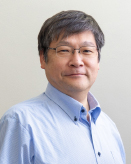Outline
Greetings from the Chairman

-
Prof. Takayoshi ARAI
Chairman
The Society of Iodine Science
(Chiba University)
Japan is the second leading country of the iodine production, which achieves around 30 percent of global share.
The Society of Iodine Science (SIS) began from the establishment of Forum on Iodine Utilization (FIU) in June 1998 by the cooperation of industry, government, and academic for enhancing the research and development of effective iodine usage. Based on the contiguous efforts, FIU was expanded as the Society of Iodine Science (SIS) in July 2007. Last year, the SIS celebrated the 25th anniversary.
One unique feature of SIS appears in the structure of the society. The researcher working on various fields have gathered around a single “iodine” element. By following the original concept of FIU, many staffs of iodine companies participate in the management of SIS with academic members. This is the results of tremendous efforts of many professors and senior members who discover the importance of iodine resources in Japan.
The 25 years journey of the SIS have not always been smooth sailing. The situation surrounding iodine changes with social conditions. During the corona disaster, the activities of the society itself were greatly restricted. Nevertheless, we were able to resume the in-person symposium last year under the leadership of former chairman Mr. Yokota, Yoshiyuki (Director of Nippoh Chemicals Co., Ltd.). Those who attended last year’s symposium must have realized the importance of face-to-face symposiums.
The SIS has been brought to this day by the unceasing efforts of everyone involved in the management of the Society, but when we look at the conditions of other societies as well, we cannot be optimistic about the future. The number of members is declining in many societies after the corona disaster.
For enhancing the activity of SIS, we must always make new efforts and continue to provide timely and attractive information to our members. For the example, recently, perovskite has received much attention as the next generation of Japan-original solar cells, in which iodine is an important element. SIS will continue to grow by integration of such a fascinating technology and science with a wide range of iodine research fields.
We will continue to strive to make SIS more attractive, and we would appreciate your cooperation and support in this endeavor.
